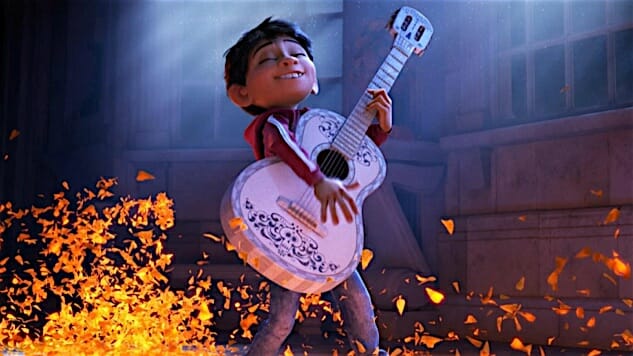Coco

With the release of Coco, the 19th film from Pixar Studios, there are at least two questions the answer to which every member in the audience can be certain of before that desk lamp comes hopping across the screen. Will the animation be top-notch, meriting adjectives like “vibrant” and “gorgeous” and perhaps even “luscious?” Without a doubt. Will the voice acting be superb, enhancing the aforementioned animation in every way? You bet it will! You can also count on at least a few effective strummings of the ol’ heartstrings. (And thanks to films like Up and Inside Out, you might even dread how destroyed you’ll be after said strumming.)
Of course, that doesn’t mean a Pixar film is quite the sure thing it was before, say, 2011’s Cars 2 (for many, Pixar’s critical nadir). Inside Out and Finding Dory were home runs, but in between, there was The Good Dinosaur (a weak infield popup, at best).
Fortunately, thanks to its story and, most importantly, its setting, Coco will count as one of the studio’s successes—and for many who long to see their culture center stage instead of just a flavor sprinkle, the story of Miguel (Anthony Gonzalez) as he struggles to pursue his dreams may prove Pixar’s most meaningful film yet.
-

-

-

-

-

-

-

-

-

-

-

-

-

-

-

-

-

-

-

-

-

-

-

-

-

-

-

-

-

-

-

-

-

-

-

-

-

-

-

-








































